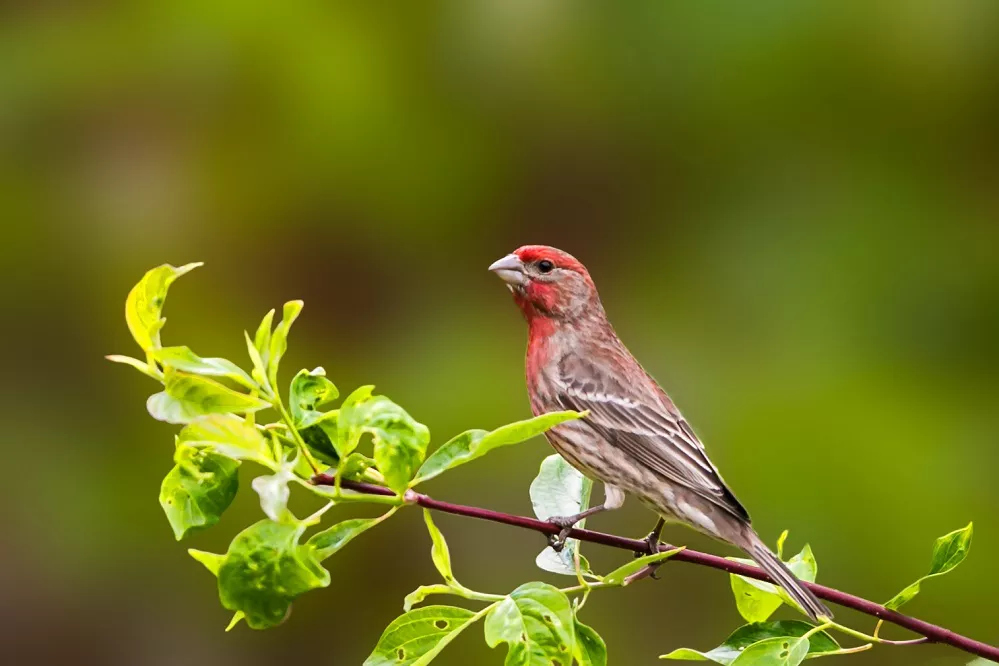House finches (Haemorhous mexicanus) are charming little birds known for their melodious songs and vibrant plumage. These adaptable avian creatures are commonly found in urban and suburban areas across North America. If you’re curious about where house finches choose to build their nests, let’s explore the preferred nesting locations and habits of these delightful birds.
Nesting Habits of House Finches
House finches typically build their nests during the breeding season, which spans from early spring to late summer. The male house finch plays an active role in courtship by selecting potential nesting sites and presenting them to the female. Once a pair has formed, they collaborate to construct the nest.
Nesting Locations
Trees and Shrubs: House finches commonly nest in trees and shrubs, particularly those with dense foliage. They favor a variety of tree species, including deciduous trees such as oaks, elms, and maples, as well as conifers like pines and spruces. Thick shrubs and bushes, such as junipers, hollies, or dense hedgerows, are also suitable nesting sites. The location within the tree or shrub can vary, but they often choose a forked branch or a spot with ample cover.
Human Structures: House finches are highly adaptable and readily take advantage of human-made structures for nesting. They frequently build nests under the eaves of buildings, in window ledges, or in gaps or crevices around homes and other structures. These resourceful birds have learned to coexist with humans and have adapted to urban environments, making use of the nooks and crannies provided by buildings.
Hanging Baskets and Planters: House finches have been known to utilize hanging baskets and planters for their nests. They often select baskets filled with foliage or potted plants, particularly those located in sheltered areas such as porches, balconies, or garden sheds. The abundance of twigs, leaves, and other materials in these containers offers an ideal foundation for their nests.
Nest Construction
House finches construct cup-shaped nests using various materials they find in their surroundings. The female builds the nest while the male assists by providing materials and occasionally participating in the construction process. House finches incorporate a wide range of materials into their nests, including twigs, grasses, leaves, bark, moss, and feathers. They skillfully weave these materials together, creating a sturdy and cozy structure for their eggs and young chicks.
Protecting House Finch Nests
If you are fortunate enough to have house finches nesting in your vicinity, it’s important to respect their space and provide a safe environment. Avoid disturbing the nests or handling the eggs or chicks, as this can cause unnecessary stress or even abandonment. Appreciate these beautiful birds from a distance and allow them to fulfill their natural nesting and parenting duties.
Promoting House Finch Nesting
To encourage house finches to nest in your area, you can create an inviting habitat by planting native trees, shrubs, and flowers that provide natural food sources and nesting materials. Offering birdhouses or nesting boxes specifically designed for house finches can also attract them to your property. Ensure the birdhouses have appropriate dimensions and entry hole sizes to accommodate house finches.
Remember, house finches are wild birds, and their nesting preferences can vary based on the availability of suitable locations and resources in their environment. By providing a diverse and welcoming habitat, you can increase the likelihood of these delightful birds choosing to nest nearby and bring their lively presence to your surroundings.
Related Topics:
- House Finch vs Purple Finch: How to Identify the Differences
- What Color Eggs Do House Finches Lay? [Revealed! ]
- How Long Do House Finches Live?


 Facebook
Facebook  Instagram
Instagram  Youtube
Youtube 